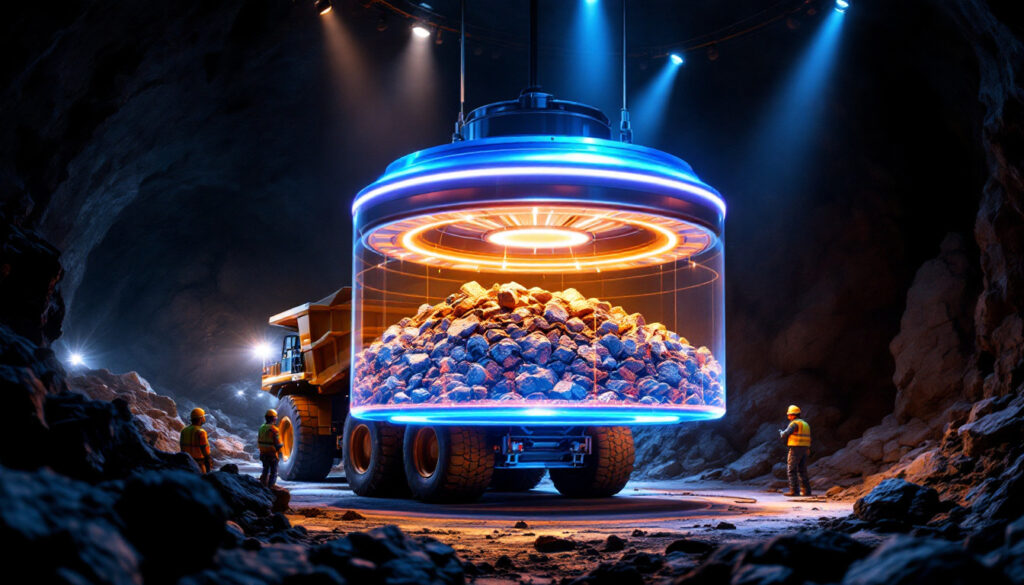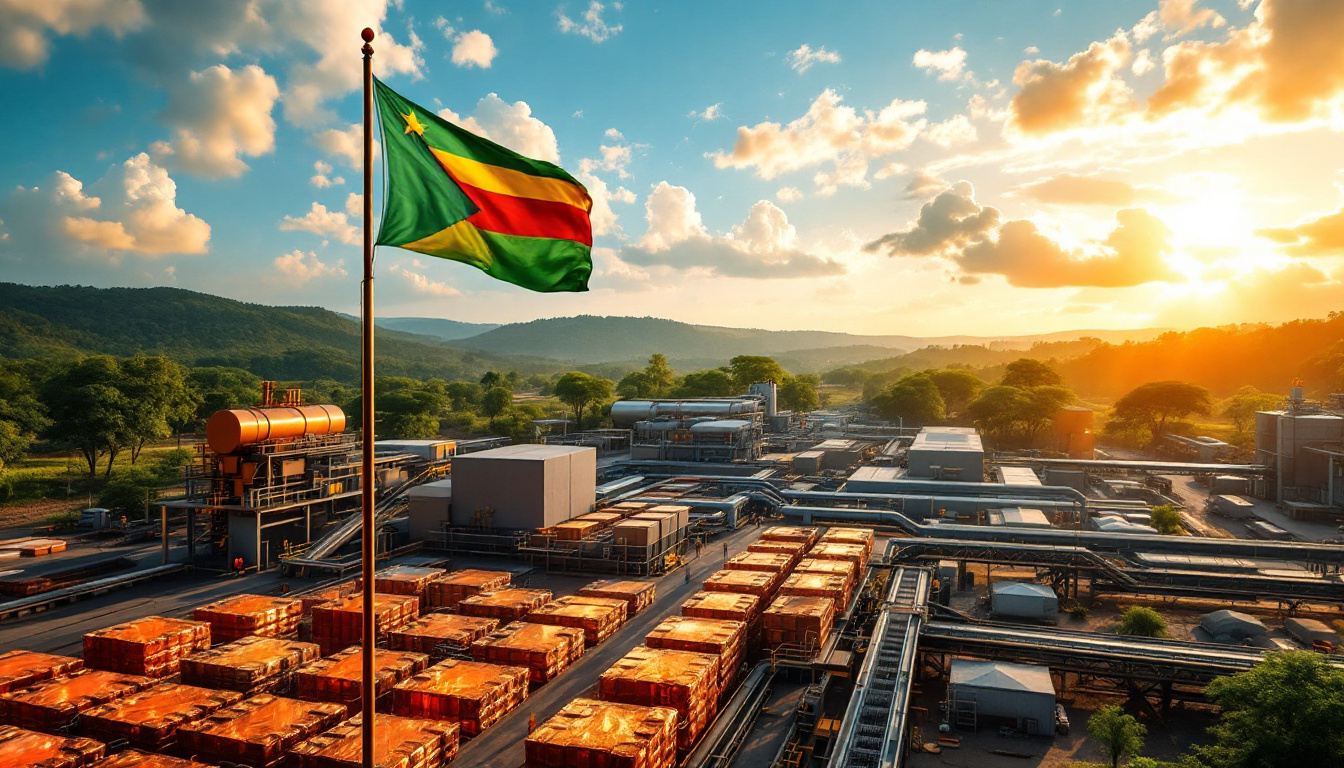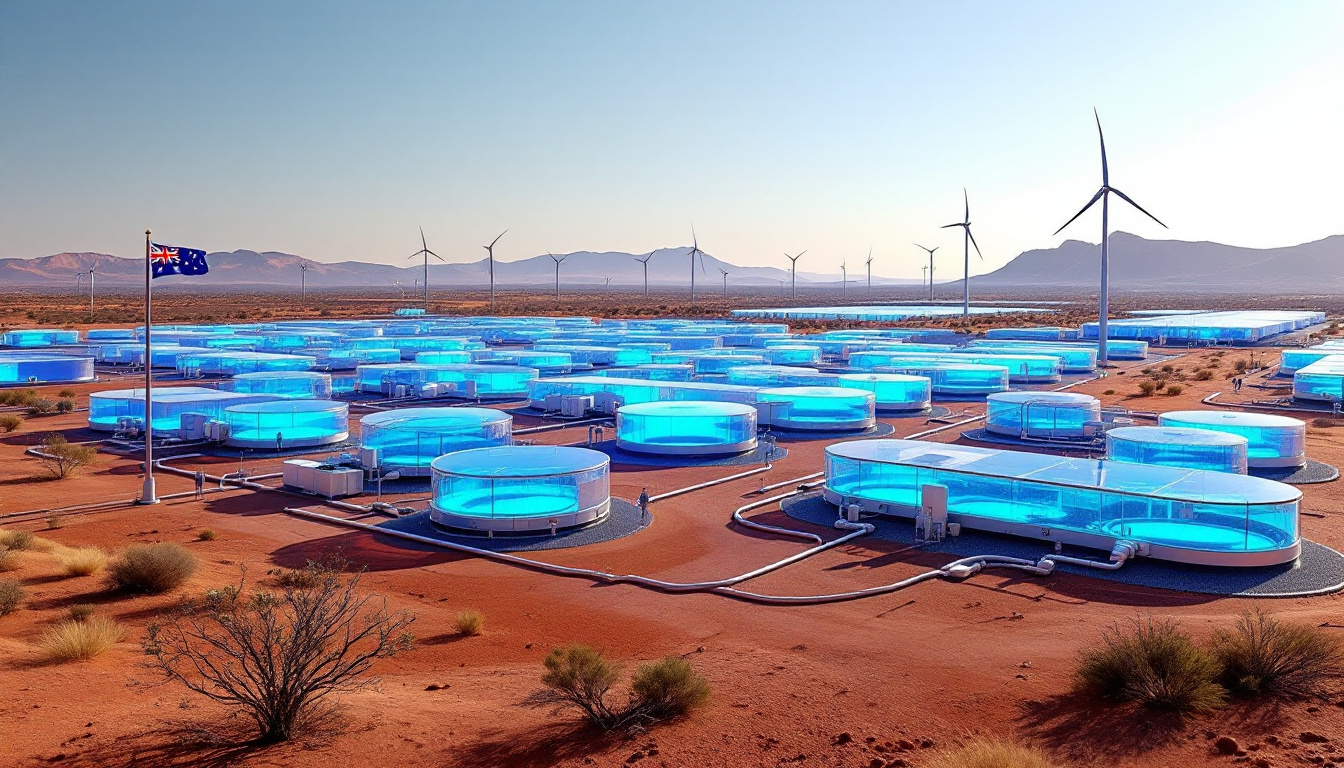What is an MR Analyser in Underground Copper Mining?
Magnetic Resonance (MR) analysers represent cutting-edge technology in the mining industry that applies the same scientific principles as medical MRI machines to determine ore grade with unprecedented accuracy in real-time. NextOre's OG3, revolutionary as the world's first MR analyser specifically engineered for underground copper mines, empowers miners to efficiently sort valuable ore from waste material directly at the source.
The technology's ability to analyze up to 50 tonnes of material in under one minute offers mining operations a transformative approach to ore sorting. Designed specifically for 30-50 tonne underground mine trucks, these systems provide immediate, actionable insights that were previously impossible to obtain without extensive lab testing.
As NextOre CEO Chris Beal notes: "Our goal has been to ensure the sensor is easy to install, simple to operate, and provides fast, actionable insights that transform mining efficiency."
How MR Technology Works in Mining Applications
Unlike conventional ore analysis methods, MR technology utilizes highly penetrative magnetic resonance principles—similar to medical MRIs but adapted for industrial applications. When ore passes through the sensor, it interacts with a magnetic field that causes copper atoms to resonate at specific frequencies, allowing precise measurement of copper content throughout the entire volume of material.
This bulk analysis capability sets MR technology apart from surface-sampling techniques, providing comprehensive grade assessments rather than just analyzing exterior portions. The technology operates without relying on ionizing radiation, significantly improving safety for mining personnel while delivering superior results.
The 3-meter wide "donut-shaped" sensor configuration allows haul trucks to drive through the sensor array without stopping, enabling continuous operations without disrupting existing mining workflows.
Why Are MR Analysers Critical for Copper Mining?
The copper industry faces unprecedented challenges that make advanced technologies like MR analysers in underground copper mines increasingly valuable. With global electrification accelerating across transportation, energy, and infrastructure sectors, copper's role as an essential conductive metal places enormous pressure on mining operations to increase efficiency and output.
Growing Demand vs. Declining Supply
Global copper demand is projected to grow approximately 70% to over 50 million tonnes per annum by 2050, according to industry projections from major mining companies like BHP. This dramatic increase is largely driven by renewable energy technologies, electric vehicles, and grid infrastructure—all of which require substantial copper inputs.
Simultaneously, many mature copper operations face declining grades, with average ore concentrations dropping from historical levels of 1-2% copper to below 0.6% in many mines today. This combination of surging demand and declining ore quality creates a critical supply gap for this essential metal in the clean energy transition.
Industry experts anticipate that without technological innovations in mining efficiency, copper prices could surge to unprecedented levels, potentially slowing global decarbonisation initiatives in mining efforts. MR analysers address this challenge by maximizing recovery from increasingly marginal deposits.
Sustainability Challenges in Traditional Mining
Conventional mining processes consume excessive water, fuel, and chemicals—often processing vast amounts of material that contains little to no valuable minerals. Early waste rock separation through MR analysis significantly reduces this environmental footprint by preventing unnecessary processing.
For example, in operations where waste material constitutes 30-40% of extracted ore, MR analysers can identify and divert this material before it enters energy-intensive crushing, grinding, and mineral separation techniques. This selective approach reduces water consumption by 25-40% and significantly lowers chemical usage in flotation processes.
The mining industry's increasing focus on sustainability metrics and environmental stewardship makes technologies that improve recovery rates while reducing resource consumption particularly valuable in today's regulatory and investor landscape.
What Makes the OG3 MR Analyser Revolutionary?
NextOre's OG3 represents a significant advancement in ore sorting technology, designed explicitly for the unique constraints and requirements of underground mining operations.
Technical Specifications and Design Features
The OG3's 3-meter wide "donut-shaped" sensor configuration enables it to scan entire haul truck loads in a single pass. This design facilitates continuous operations without disrupting existing mining workflows—trucks simply drive through the sensor array during normal operations.
The system's ruggedized construction withstands the harsh underground environment, including dust, moisture, vibration, and temperature fluctuations common in mining operations. As part of NextOre's OGX product line (where "OG" stands for open geometry), the system's innovative design improves efficiency in crane positioning and installation compared to earlier iterations.
Specifically sized for 30-50 tonne underground mine trucks common in medium to large-scale operations, the OG3 integrates seamlessly with existing fleet equipment without requiring specialized vehicles or extensive modifications to established mining practices.
Advantages Over Conventional Ore Analysis Methods
The OG3 system demonstrates clear superiority to conventional ion-radiation scanning systems in several critical areas:
-
Accuracy: While traditional XRF (X-ray fluorescence) systems typically achieve grade estimations within ±2-5%, MR technology delivers accuracy to within ±0.5% for bulk ore measurement.
-
Speed: The OG3 processes up to 50 tonnes in under one minute, far outpacing laboratory testing or portable analytical methods.
-
Safety: By eliminating reliance on ionizing radiation, the system removes radiation exposure risks for operators and eliminates the complex regulatory requirements associated with radioactive sources.
-
Volume Analysis: Unlike technologies that only measure surface characteristics, MR technology penetrates the entire ore body, providing comprehensive grade assessment rather than surface-only analysis.
NextOre COO Shivika Singh emphasizes this advantage: "The OG3 represents a significant leap forward from conventional ion-radiation systems, delivering accurate bulk measurements rather than just surface readings."
How Do MR Analysers Improve Mining Economics?
The implementation of MR analysers in underground copper mines delivers substantial financial and operational benefits that directly impact the bottom line for mining operations.
Cost Reduction Benefits
By enabling early waste identification and separation, MR analysers eliminate unnecessary haulage of waste material—a direct operating expense reduction estimated at 15-25% in typical mining operations. This translates to fuel savings of up to 30%, significant wear reduction on vehicles, and extended equipment lifespan.
Processing costs decrease substantially when barren material is removed early in the mining cycle. The reduced volume of material requiring crushing, grinding, and flotation means lower energy consumption, decreased mill wear, and reduced reagent usage—collectively representing 20-30% savings in processing costs per tonne of valuable mineral produced.
The technology also minimizes wet tailings production per tonne of valuable material, reducing long-term environmental liability and tailings management costs. For a typical medium-sized copper operation, these combined savings can amount to millions of dollars annually without requiring costly infrastructure upgrades.
Operational Efficiency Improvements
Beyond direct cost savings, MR analysers enable better ore blending and downstream processing efficiency. By providing real-time grade information, operations can maintain consistent mill feed grades despite variable ore quality from different mining areas.
The technology optimizes material movement from satellite orebodies to central processing facilities, allowing operations to make informed decisions about which material warrants transportation and processing based on actual mineral content rather than geological estimates.
For mining companies facing the challenge of declining grades or considering expensive expansion projects, MR analysers provide a smart, lower-risk solution compared to large-scale capital expansion. The technology effectively increases the resource base by making previously uneconomic material viable through selective processing.
Future applications being explored include integration with load-haul-dump bucket operations, which would further extend efficiency benefits by enabling grade-based decisions at the earliest possible point in the material handling chain.
Where Are MR Analysers Being Deployed?
The technology is gaining significant traction globally, with several major mining operations implementing MR analysers to improve efficiency and sustainability.
Current Installations and Case Studies
First Quantum Minerals' Kansanshi copper mine in Zambia represents one of the earliest and most successful implementations of MR technology. Since deployment, the operation has reported improved recovery rates of approximately 15% while reducing processing costs and environmental impact. The system processes thousands of tonnes daily, demonstrating the technology's reliability in continuous industrial applications.
In Chile, a large-scale 6,500 tonne-per-hour conveyor application represents the largest deployment of MR technology to date. This installation at one of the world's premier copper jurisdictions has validated the technology's efficacy at scales relevant to major global producers.
The first OG3 deployment specifically designed for underground applications is scheduled for an underground mine in New South Wales, Australia. This installation represents a significant milestone in adapting the technology to the unique constraints of underground operations, including space limitations, ventilation considerations, and integration with underground haulage systems.
Future Applications and Research
NextOre is actively expanding the technology's applications beyond copper to other minerals, including initial research into nickel, lithium, and rare earth elements. These developments could significantly broaden the technology's impact across the mining sector.
Research into expanding application to load-haul-dump operations is particularly promising for underground mines, as it would enable grade-based decisions at the earliest possible point in the material handling chain. This application could further reduce unnecessary material movement in confined underground environments where haulage represents a significant operational bottleneck.
The technology's growing global footprint extends beyond Australia, Zambia, and Chile to include preliminary installations and testing in major mining regions including Peru, Canada, and the Democratic Republic of Congo—all significant copper-producing jurisdictions facing challenges with declining grades and increasing environmental scrutiny.
How Does MR Technology Compare to Traditional Ore Sorting Methods?
Technological Advantages
MR technology's most significant advantage lies in its ability to provide bulk grade measurements rather than surface-only analysis. While technologies like XRF, LIBS (Laser-Induced Breakdown Spectroscopy), and hyperspectral imaging only measure surface characteristics of ore, MR technology penetrates the entire volume, providing comprehensive grade assessment.
The speed of MR processing capabilities significantly outpaces conventional methods. Laboratory assays typically require hours or days to deliver results, and even portable XRF devices require multiple point samples to estimate bulk grade. By contrast, MR technology delivers comprehensive grade analysis in seconds as material passes through the sensor.
Accuracy in grade determination represents another crucial advantage. Traditional technologies achieve grade estimations within ±2-5% at best, while MR technology delivers accuracy to within ±0.5% for bulk measurements. This precision is particularly valuable when processing marginal ores where slight grade variations significantly impact economic viability.
The improved safety profile without ionizing radiation eliminates regulatory complexities associated with radiation sources while removing exposure risks for personnel—particularly important in confined underground environments where ventilation and proximity to operators are concerns.
Integration with Mining Operations
The technology's ease of installation and simple operation make it particularly valuable for mining operations seeking to improve efficiency without extensive retraining or operational disruptions. The system integrates with existing fleet management and process control systems to provide real-time grade information.
MR analysers deliver fast, actionable insights that enable immediate operational decisions rather than retrospective analysis after material has already been processed. This real-time capability transforms ore sorting from a quality control function to an active production optimization tool.
The systems demonstrate strong compatibility with existing mining equipment and workflows. Trucks or conveyors require no modification to pass through the sensors, making implementation straightforward without disrupting established practices.
The minimal disruption to ongoing operations during installation and commissioning is particularly valuable in production environments where downtime carries significant costs. Systems can typically be installed during scheduled maintenance periods without impacting production targets.
What Environmental Benefits Do MR Analysers Provide?
Sustainability Improvements
The environmental benefits of implementing MR analysers in underground copper mines extend across multiple dimensions of sustainability.
Water consumption reductions of 25-40% represent one of the most significant environmental advantages in regions where water scarcity affects both operations and communities. By processing less waste material, operations reduce water requirements for grinding, flotation, and tailings management.
Fuel usage decreases through optimized haulage as trucks transport only valuable material rather than waste rock. This typically translates to 15-30% reductions in diesel consumption and corresponding decreases in maintenance requirements and fleet emissions.
Chemical usage in processing circuits decreases proportionally with waste reduction. Flotation reagents, pH modifiers, and other processing chemicals can be reduced by 20-30% when processing only higher-grade material, reducing both costs and environmental impacts of chemical procurement, handling, and disposal.
Perhaps most significantly, MR analysers enable reduced tailings production per tonne of valuable material—addressing one of the mining industry's most pressing environmental challenges. By preventing waste rock from entering processing circuits, operations can significantly reduce tailings volume and associated long-term management requirements.
Emissions Reduction Potential
The technology contributes to a lower carbon footprint through reduced material movement both underground and on surface. The energy required to move, crush, grind, and process waste rock represents a significant portion of mining operations' emissions profile, making early waste separation a powerful emissions reduction strategy.
Less energy required for processing waste material translates directly to reduced scope 1 and 2 carbon emissions. By some estimates, implementing MR technology can reduce processing-related energy consumption by 15-25%, with corresponding reductions in carbon emissions.
These environmental benefits support the mining industry's sustainability goals and ESG (Environmental, Social, Governance) commitments. As investors and regulators increasingly scrutinize mining's environmental footprint, technologies that deliver measurable sustainability improvements offer both compliance benefits and potential competitive advantages in securing development approvals and investment.
Who Developed the MR Analyser Technology?
Technology Origins and Development
The MR analyser technology was initially developed by CSIRO (Commonwealth Scientific and Industrial Research Organisation), Australia's national science agency, as an R&D project focused on adapting medical MRI principles to industrial mineral processing applications.
After successful laboratory trials demonstrating the technology's effectiveness, the innovation was commercialized by Australian startup NextOre, which has continued refining and expanding the application of MR technology in mining.
The first commercial applications utilized sensors positioned over conveyor belts at processing plants, enabling sorting decisions before material entered crushing and grinding circuits. These initial deployments validated the technology's accuracy and reliability in continuous industrial settings.
The technology's evolution to the OG3 for underground applications represents a significant advancement in adapting the system to the unique constraints of underground mining environments. This development required addressing challenges including space limitations, integration with mobile equipment, and ruggedization for harsh conditions.
Key Leadership and Expertise
Chris Beal, NextOre's CEO, has consistently emphasized the technology's ease of installation and operation: "From the beginning, our focus has been on creating systems that deliver immediate value without disrupting existing operations. The OG3 achieves this through simple installation and intuitive operation."
Shivika Singh, NextOre's COO, highlights the technological advantages over conventional systems: "The ability to measure bulk ore grades rather than just surface characteristics fundamentally changes what's possible in ore sorting. We're seeing operations make decisions with a level of confidence that wasn't previously possible."
The technology builds on CSIRO's extensive research expertise in magnetic resonance technology, combining decades of scientific development with practical mining engineering to create systems suited to the demanding requirements of industrial mining applications.
FAQ About MR Analysers in Underground Copper Mining
What problem does the MR analyser solve?
The MR analyser addresses the critical challenge of efficiently separating valuable ore from waste material in underground copper mines. By providing real-time, accurate grade information, it enables operations to make informed decisions about which material warrants processing. This reduces processing costs and environmental impact while improving overall mineral recovery from increasingly marginal deposits.
How accurate is the MR analyser compared to traditional methods?
MR analysers provide significantly higher accuracy than conventional ion-radiation scanning systems. While traditional technologies typically achieve grade estimations within ±2-5%, MR technology delivers accuracy to within ±0.5% for bulk ore measurements. This precision is particularly valuable when processing marginal ores where slight grade variations significantly impact economic viability.
What maintenance requirements do MR analysers have?
MR analysers are designed for high availability in demanding mining environments. The systems require standard preventative maintenance similar to other industrial sensors, including occasional calibration and inspection of key components. The absence of moving parts in the sensor array itself contributes to high reliability and minimal downtime compared to mechanical sorting systems.
Can MR analysers be used for minerals other than copper?
NextOre is actively researching applications beyond copper, with promising results for nickel, lithium, and certain rare earth elements. The technology's effectiveness varies based on the magnetic properties of target minerals, with some requiring modified sensor configurations or processing algorithms to achieve optimal results.
What is the ROI timeframe for implementing an MR analyser?
While specific ROI figures vary depending on operation size, ore grade, and waste percentage, most installations achieve payback periods of 12-24 months through direct operating cost reductions. The technology delivers immediate value without requiring costly infrastructure upgrades, with benefits scaling proportionally to waste rejection rates and processing cost savings.
Future of MR Analyser Technology in Mining
Technological Advancements on the Horizon
Ongoing research for applications beyond copper represents a significant frontier for MR technology development. As battery metals like nickel and lithium become increasingly strategic, adapting MR technology to these minerals could substantially impact supply chains for clean energy investments.
The potential for increased automation and integration with AI systems offers exciting possibilities for further optimization. Machine learning algorithms could enhance grade prediction accuracy by incorporating historical data and identifying subtle patterns in magnetic resonance signatures that correlate with mineral content.
Expansion of sensor capabilities for different mining environments continues, with research into more compact designs for narrow-vein operations and higher-capacity configurations for large-scale block cave mines. These adaptations will make the technology accessible across diverse mining methods and deposit types.
Expanding Global Implementation
The
Ready to Get Instant Alerts on Major ASX Mineral Discoveries?
Keep ahead of the market with Discovery Alert's proprietary Discovery IQ model, providing real-time alerts on significant mineral discoveries across the ASX. Visit our dedicated discoveries page to understand how early identification of discoveries like those mentioned can lead to exceptional investment returns.




